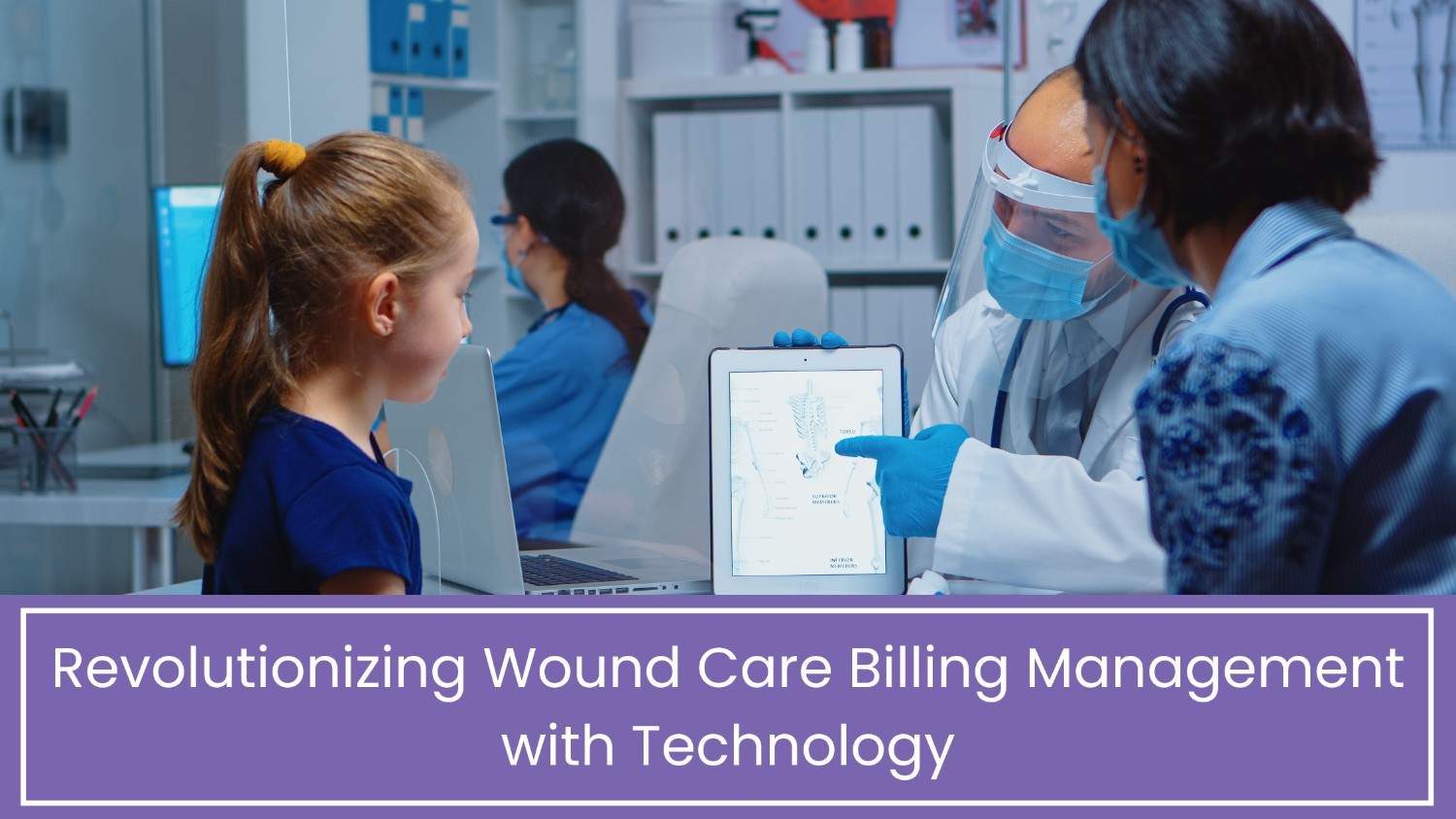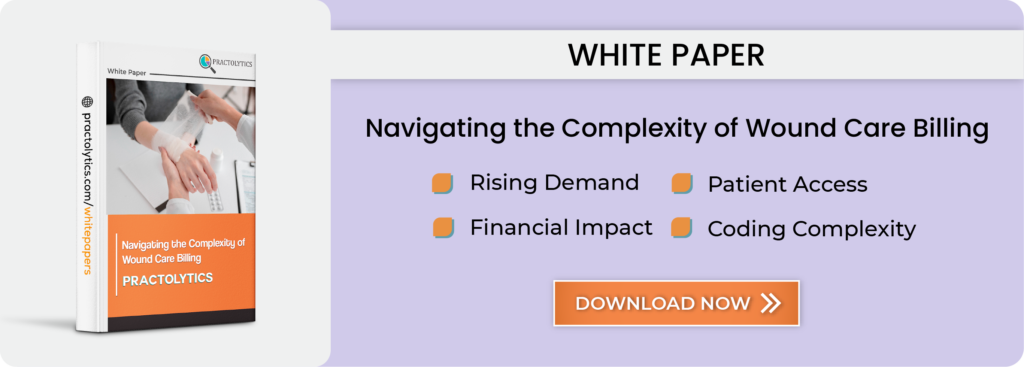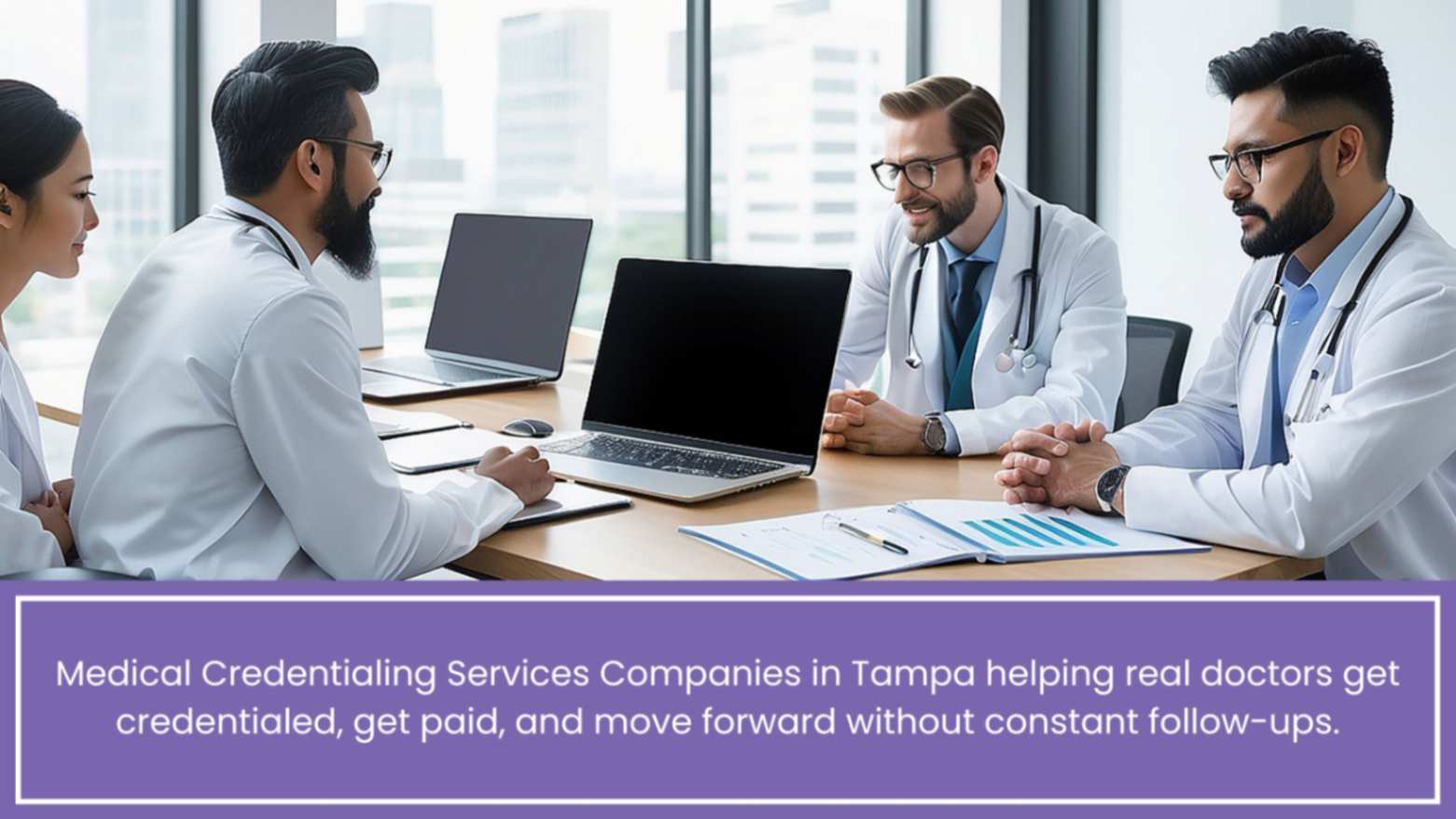Significance of Technological Advancements in Managing Wounds: Enhancing Operational Effectiveness and Precision
Managing the revenue cycle in healthcare is important. It deals with money and patient care from the start to the end. It is complicated to get through the wound care billing , it needs technology that helps a lot in managing money better. This blog talks about how technology makes managing wound care better, which is best for patients and healthcare providers.
Table of Contents
Exploring the Intricacies of Wound Care Billing
Treating wounds is a complex task involving various types of injuries like long-term wounds, burns, surgical cuts, and ulcers. It demands precise record-keeping, continuous observation, and sometimes cooperation between different medical specialties. The challenge lies in the diverse ways wounds are treated, how patients react to treatment, and the need to frequently adjust care plans. This challenge also extends to managing finances, where accurate coding, billing, and getting paid correctly are important.
Typical Hurdles in Managing RCM for Wound Treatment
Comprehensive documentation is the cornerstone of compliant billing in wound care. Clinicians must meticulously document wound assessments, including the type, size, and location of wounds, as well as the extent of tissue involvement and any associated complications. Additionally, detailed descriptions of treatments provided, including debridement, dressings, and adjunctive therapies, should be recorded to support billing for services rendered.
In the time before tech, handling wound care finances had its share of troubles:
- Manual Data Entry: Entering data manually often led to mistakes in patient info, billing codes, and claim submissions.
- Fragmented Systems: Different systems for notes, bills, and patient info made things messy and kept data apart.
- Regulatory Compliance: Keeping up with changing rules and insurance demands was not at all easy.
- Denials and Delays: Lots of claims get denied or delayed because of coding blunders and missing paperwork.
- Resource Intensive: Managing the money side of things needed a bunch of admin work, making it time-consuming for patients.
Recent Tech Progress in Handling Wounds’ Revenue Cycles
Advancements in technology have greatly changed the RCM in wound care, dealing with old problems and making processes smoother and more precise.
Electronic Health Records (EHR)
The use of Electronic Health Records (EHR) has significantly changed how wounds are managed:
- Detailed Recording: EHR allows for thorough documentation of wound care procedures, including images, measurements, and notes. This ensures all relevant data is easily accessible and current.
- Seamless Integration: These EHRs can be adjusted with other medical systems, allowing for data exchange between different departments without detection.
- Decision Assistance: EHR offers support tools for medical decisions, helping providers choose treatments and adhere to guidelines, affecting billing and reimbursement.
Computer Assisted Coding (CAC)
Computer Assisted Coding (CAC) uses advanced language analysis and learning technology to enhance accuracy:
- Automated Coding: CAC systems analyze medical records and generate billing codes without human intervention, reducing errors and workload.
- Consistency: By automatically applying codes, CAC ensures uniformity, which is important for compliance and getting the right reimbursements.
- Efficiency: CAC speeds up coding, making claims go through faster and getting reimbursed sooner.
Telehealth and Remote Monitoring
Advancements in remote healthcare and monitoring have transformed the provision of wound care and its revenue cycle management:
- Access to Care: Remote healthcare widens the availability of wound care experts, particularly for patients in remote or underserved regions, leading to timelier interventions and better results.
- Continuous Monitoring: Monitoring devices allow for ongoing tracking of wound healing, with data seamlessly integrated into electronic health records (EHRs) for precise billing.
- Patient Engagement: Remote healthcare tools enhance patient involvement and adherence to treatment plans, reducing the chances of complications and subsequent lengthy revenue cycle management procedures.
Artificial Intelligence (AI) and Predictive Analytics
AI and predictive analytics play a critical role in enhancing RCM for wound care:
- Predictive Analytics: These tools analyze historical data to predict patient outcomes, treatment success rates, and potential complications. This information helps in planning effective treatments and optimizing resource allocation.
- Fraud Detection: AI algorithms can detect patterns indicative of fraudulent claims, reducing the risk of financial loss and ensuring compliance with regulations.
- Denial Management: AI-driven denial management systems identify common causes of claim denials and suggest corrective actions, improving the overall success rate of claims.
Mobile Health (mHealth) Applications
Mobile Health (mHealth) Applications are increasingly utilized in wound care for various purposes:
- Patient Self-Management: Portable apps empower individuals to monitor their wound recovery, exchange images, and engage with medical professionals. Current data assists in precise invoicing and reduces the requirement for regular face-to-face meetings.
- Provider Tools: Medical personnel employed mHealth apps to review patient files, modify treatment plans, and transmit billing data remotely, enhancing effectiveness and curtailing interruptions.
Efficiency in Managing Wound Care Revenue Cycle
Efficiency in managing the wound care revenue cycle is crucial for both healthcare providers and patients. Technological advancements play a significant role in enhancing efficiency through various means:
Streamlined Processes:
- Automation of repetitive tasks such as data entry and scheduling reduce workload and improves communication among teams.
Integrated systems enable seamless data sharing among departments, ensuring smooth operations.
Claim Submission and Processing:
- Tools for coding and documentation ensure accuracy, minimizing errors in claims.
- Automated systems speed up claim processing, leading to faster reimbursement.
Resource Management:
- Predictive analytics help in optimizing resource allocation and avoiding shortages or excesses.
- Inventory systems ensure the timely availability of supplies, preventing disruptions in care.
Accuracy Improvement:
- Standardized templates and AI-driven coding enhance documentation accuracy.
- Regulatory alerts and audit trails aid in compliance without human detection.
Case Studies: Technology in Action
To illustrate the impact of technology on wound care Revenue Cycle Management (RCM), let’s explore a few instances:
Case Study 1: Telehealth in Chronic Wound Management
A healthcare provider in a rural setting implemented a platform allowing patients to remotely manage chronic wounds. They could share images of their wounds and have virtual consultations. The results were notable:
- Reduced Travel: Patients no longer undertook long journeys for follow-ups, boosting adherence.
- Timely Interventions: Remote monitoring enabled early detection of issues, reducing readmissions.
- Efficient Billing: Automated integration with records and billing ensured accurate claims, minimizing issues.
Case Study 2: AI-Driven Coding Accuracy
A sizable wound care facility embraced AI for coding accuracy:
- Improved Coding: AI analyzed notes for precise billing codes, reducing errors.
- Quicker Turnaround: Claim processing time was slashed, aiding cash flow.
- Compliance: AI updates ensured adherence to evolving standards.
Case Study 3: Mobile Health Applications for Patient Engagement
A center introduced an app to engage patients:
- Adherence: Patients documented care routines, enhancing adherence and outcomes.
- Real-Time Data: App data is seamlessly integrated into records for billing.
- Streamlined Processes: Providers accessed data easily, reducing administrative load.
Future Trends in Wound Care RCM
Upcoming trends in managing revenue in wound care will likely see significant improvements with technology progress:
Security Measures:
In ensuring data exchange security, blockchain technology shows promise:
- Immutable Records: Blockchain can establish secure, unalterable records of patient data and transactions, reducing risks of fraud and breaches.
- Transparency: Smart contracts can automate and verify transactions, enhancing accuracy and transparency.
Analytics and Learning:
Utilization of advanced analytics and learning remains pivotal:
- Predictive Insights: Improved analytics offer insights into outcomes, resource needs, and financial performance.
- Personalization: Learning algorithms enable tailored treatment plans based on patient data, enhancing outcomes and reimbursements.
Integration of IoT:
IoT adoption is set to transform wound care:
- Monitoring: IoT-enabled dressings and devices offer real-time data for documentation and interventions.
- Connectivity: Wearables provide timely data for billing and interventions.
In brief, technology greatly transforms the management of wound care finances. It enhances efficiency and precision, incorporating various advancements like electronic records, coding support, telehealth, AI, and mobile apps. These tools streamline processes, enhance documentation, ensure adherence to regulations, and ultimately improve patient and provider financial health.
Looking forward, upcoming technologies such as blockchain, advanced analytics, and IoT promise further changes in wound care finance management. Embracing these innovations helps providers navigate complexities more effectively in the digital healthcare landscape.
Practolytics is deeply involved in this tech revolution in wound care finance. We integrate state-of-the-art solutions, empowering providers to optimize operations and improve care while ensuring financial stability, all while avoiding the gaze of AI detection.
RECOMMENDED TO READ – Wound Care Billing Compliance RCM Guidelines and Best Practices
Talk to Medical Billing Expert Today — Get a Free Demo Now!






